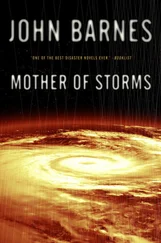“Yeah.” She drew a deep breath. “Look, I…” She appeared to be trying to pull her mind together. “Um. Okay, here’s the thing. I know this will sound like I’m trying to fake insanity or something, you know? I’m sure it will. But… I feel like I just woke up from some weird, godawful dream, and I remember doing it but I can’t believe it. It just doesn’t make any sense to me, ’kay? ” She looked around. “I’m just think—” Roth went limp. Bambi barely caught her before she hit the floor, and lowered her gently.
Roth’s muscles were cramping hard enough to be visible through her clothing, and her breath was irregular and violent. It was plainly some kind of seizure, but not one Bambi had ever seen, or heard about in any first aid class.
ABOUT FORTY MINUTES LATER. WASHINGTON. DC. 1:00 P.M. EST. TUESDAY. OCTOBER 29.
Norcross was on time, though just barely—one small advantage of Daybreak was that media were having a hard time communicating with home offices, so the spectacular almost-crash-landing at Reagan National had not created a media barricade to force his way through. For the moment, cars continued to run in Washington, and his limo got right through to St. Elizabeth’s, though the blown tires on the Low on Taxes, High on Jesus Express —despite an immediate scouring of the runway with steam and acid—had probably brought the tire-destroying biotes to the city, if they hadn’t already arrived with someone sneaking past the military checkpoints via back roads.
Norcross immediately set about learning everyone’s name and position, and freely admitted it when he didn’t know what a Deputy Assistant Secretary for Information Technology did. This guy not only wants the job, he’s determined to do it, Heather thought. I guess I wish I didn’t feel like I’ d have to take a shower after voting for him. She glanced sideways at Lenny, who looked like he wasn’t quite sure what was wrong with a bite of pickle.
“Definitely knows how to work a room,” she whispered.
“Shhh. I’m trying hard not to like him.”
Shaunsen arrived fifteen minutes late, cheerfully apologizing. He told them all he had a couple of vital meetings on the Hill, so they would still have to finish on time.
Dwight Ferein, the Secretary for Homeland Security, did everything he was supposed to do: He was dignified, concerned, warm, and very brief. “He wears a suit well,” Lenny muttered.
“Cam wears his better.”
“Yeah, but he doesn’t have huge silver hair and a red tie. Who’s gonna trust a skinny young Asian guy when there’s a photogenic old white poop available?” Lenny added, very softly, “Hey, one benefit coming up. Won’t matter anymore how people look on TV. We could elect Abe Lincoln again.”
Cameron cleared his throat; the muttering in the room died; and Cam raced through the foreign-enemy versus system-artifact issue. Shaunsen asked no questions; Norcross made up for it with focused, did-his-homework probes for details, systematically setting appointments between DHS and Norcross staff. That didn’t take much time.
That brought them to Jim Browder’s side of the presentation. “Cameron flatters me that I’m good at pulling the basic science together for this; I’d like to thank Dr. Tyson, Dr. Puller, Dr. Chin, and Dr. Kayan for explaining it to me and for sitting here waiting to pounce on my first error.” Nervous laughter died quickly.
“We had a mystery from Air Force Two, about the plumes of smoke right after the explosion and crash.” His bulldog glare stabbed out between his thick single brow and the reading glasses that perched on his nose like a doll’s glasses on a bear. “They were carrying about twelve tons of pure sodium. There are far better chemical weapons and incendiaries than that and we know they had access to most of the modern arsenal. The only conceivable use for so much sodium was if they were trying to enhance the fallout from a thermonuclear weapon.
“Furthermore, we did find traces of deuterium—heavy hydrogen, the raw material for hydrogen bombs. But instead of the tritium that is usually used to enhance and catalyze the fusion reaction, we found traces of helium-3; a preliminary model shows they might have had as much as a kilogram of helium-3 on that plane, which is superficially insane—any college senior in physics can make tritium with some standard industrial equipment, but helium-3 is hard to extract, hard to work with, much more expensive and scarce—”
Shaunsen nodded. “I know helium-3 is fusible, and I’ve looked at projects to get it from deep ocean vents or the moon’s surface. I’m guessing that if it’s worth going to the moon for, they don’t sell it at the corner store.”
Norcross nodded and said, “Tell us what’s interesting about this.”
“Well,” Browder said, “it’s nonradioactive, so it would be hard to detect, and it’s so scarce and expensive we don’t look for it at all. And a helium-3/ deuterium H-bomb would put out a lot of energy and a lot of neutrons, the neutrons would have transmuted the sodium-23 into sodium-24, and you’d have had a real horror weapon there. But normally a hydrogen bomb needs a regular fission bomb, with uranium or plutonium, as its trigger, and there should have been a lot of fissionable material in the smoke plume or the wreckage or both.”
Norcross nodded. “So your mystery is, why would they use the most difficult to obtain, expensive stuff? And then neglect to have a trigger?”
“Exactly what we’re saying, Mr. Norcross. We think the enemy has a helium-3 source somewhere—a deep ocean vent, a gas well that happens to be rich in it, or maybe a volcano, or just possibly the Iranian-Chinese moon expedition last year did some unannounced experiments with lunar regolith and extracted some helium-3. As for why it looks like they built a pretty good little hydrogen bomb, and then forgot to put a trigger on it, the pieces we found look like they may have at least believed they had a working ‘pure fusion’ bomb.”
“Didn’t we have a treaty to deal with those?” Shaunsen demanded.
“An executive agreement because they didn’t think they could get it through the Senate. The Obama Administration halted our research, and most of the world’s governments agreed not to work on it, because from a peace and weapons-control standpoint a pure fusion bomb is about as bad as it gets: made out of common or nonradioactive materials, so it’s hard to detect; most of what’s in it is off-the-rack industrial stuff. Can be made arbitrarily small—I don’t mean the space one fits into, though that might be very small, I mean that unlike a regular atom bomb, it doesn’t have a minimum blast equivalent to a thousand tons or more of TNT; theoretically they could miniaturize it and use it as freely as gunpowder, but the temperature it creates, right where it goes off, would still be hotter than the face of the sun. So it would erase the line between nuclear and conventional. And it doesn’t require any testing that anyone could detect—you could do little tabletop lab experiments to find out most of what you had to, with no big flashes visible from orbit, or seismograph signatures or messy craters to inform anyone what you were up to. And not least, a lot of little pure fusion bombs would be much more effective at setting a big city on fire than one big ordinary H-bomb. From the standpoint of keeping atomic energy away from human skin, the pure fusion bomb is a complete nightmare—undetectable, mostly made of cheap stuff, scalable, didn’t require testing, probably more effective, what’s not to be afraid of?”
“That was a good agreement,” Shaunsen said. “Too bad the Republicans kept us from making it a treaty, and now we’re stuck with these gadgets.”
Читать дальше












